Newsletter from the world’s largest mosquito surveillance network
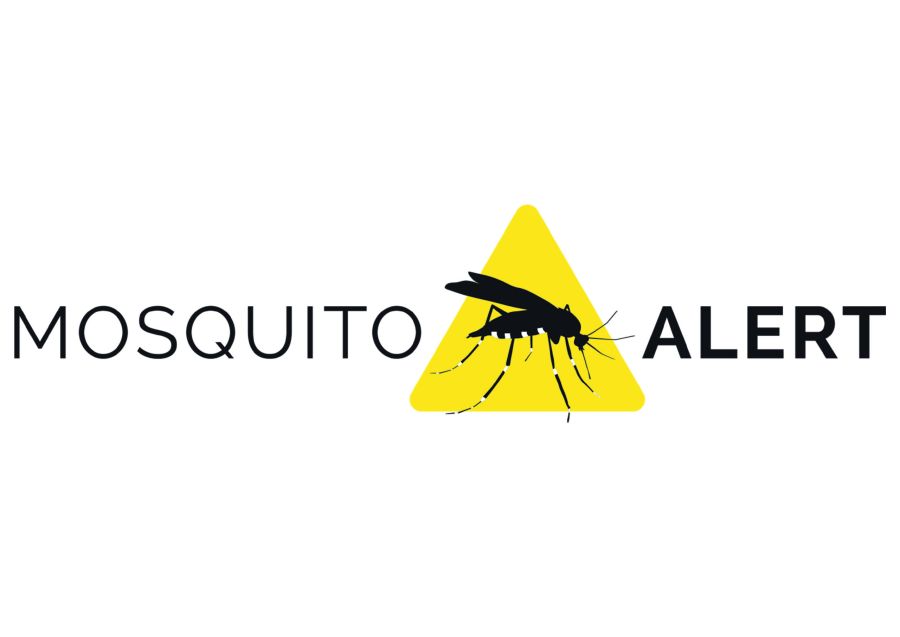
Partner of One Health PACT

Once again we are approaching summer. Over the years, around this time I have always contributed considerably to feeding the mosquitoes. My efforts to crush them and avoid their bites pale in comparison to their successes, and it seems that the season is back: the other day in Valencia (Spain) they feasted on my legs. The bumps that came out were so big and red that they looked like the surface of Mars! Do mosquitoes sting you too? Remember that you can record the bites you receive and send the data to Mosquito Alert, in this way you will contribute to a collective effort to monitor mosquitoes at a national and European level.
THE LARGEST MOSQUITO MONITORING NETWORK IN THE WORLD
Currently we are more than 11,000 people who carry in our mobile Mosquito Alert, last summer we became more than 16,000 citizen scientists participating, generating the largest invasive mosquito surveillance network in the world. In a single year we received 36,243 reports of mosquitoes, 16,948 of bites and 6,170 of breeding sources. This year we would like to exceed these figures in order to produce the most detailed map of the distribution of invasive mosquitoes in Europe.
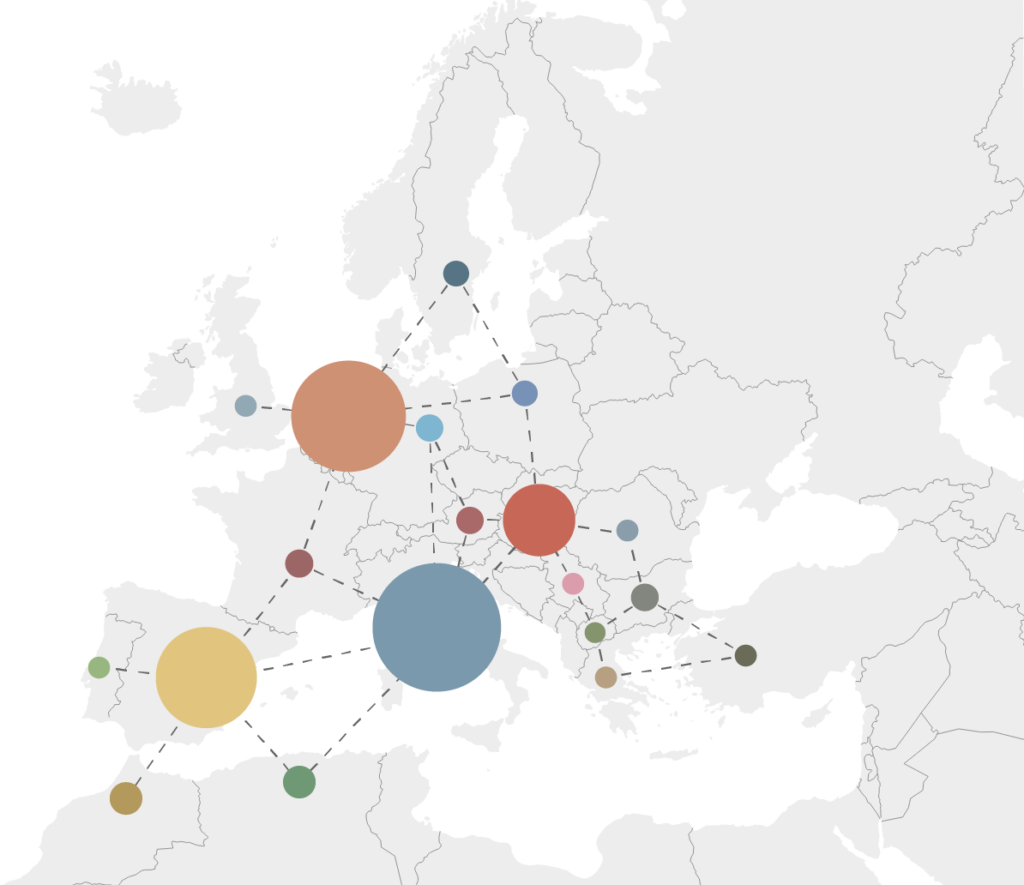
The figure shows the number of people with the Mosquito Alert app installed in different European and surrounding countries in May 2022. The size of the circles corresponds to the number of participants in the country: Italy, the Netherlands, Spain and Hungary are the ones that they have a larger community of citizen scientists.
The following figure represents the number of total reports (mosquitoes, bites and breeding sites) received by province (NUT3) throughout 2021. In Europe, data has been obtained from 42 countries, 817 provinces (NUTs3) and 4,431 municipalities, achieving good territorial coverage in Spain, Italy, Hungary and the Netherlands, where there is a larger community of participants.
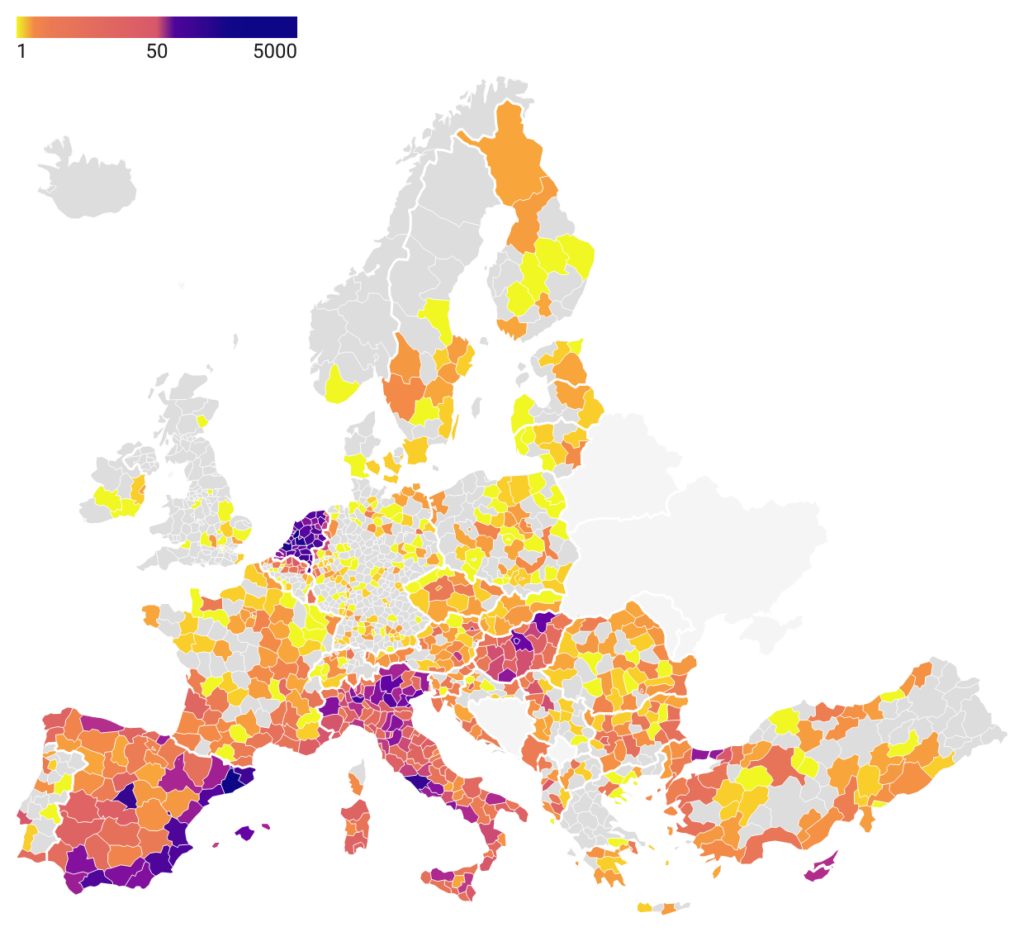
START OF SEASON 2022
This year’s season has started in a very similar way to how it did in 2021: the common mosquito (Culex pipiens) is the species that accumulates the most reports at the end of May, although considerably less than last year (dashed blue line). The species has been observed throughout the months, including in January and February, increasing substantially in April, while the invasive species, the tiger mosquito (Aedes albopictus) had gone unnoticed until this month, during which its numbers have skyrocketed. observations in Italy and Spain.
The maps show the distribution of the observations made by the volunteers, with the tiger mosquito practically restricted to the Mediterranean coast in Spain, a large part of the Italian peninsula and some points in the Balkans and Hungary. The common mosquito shows, for the moment, a similar distribution, partly determined by the distribution of the participants, but with a presence throughout the Iberian Peninsula and in the Netherlands.
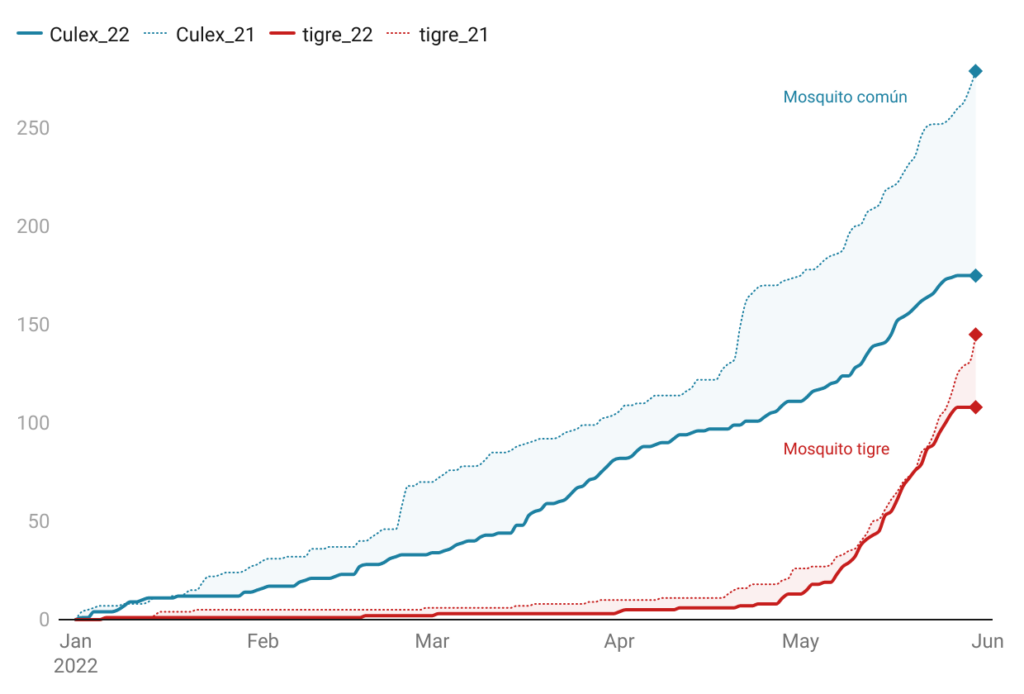
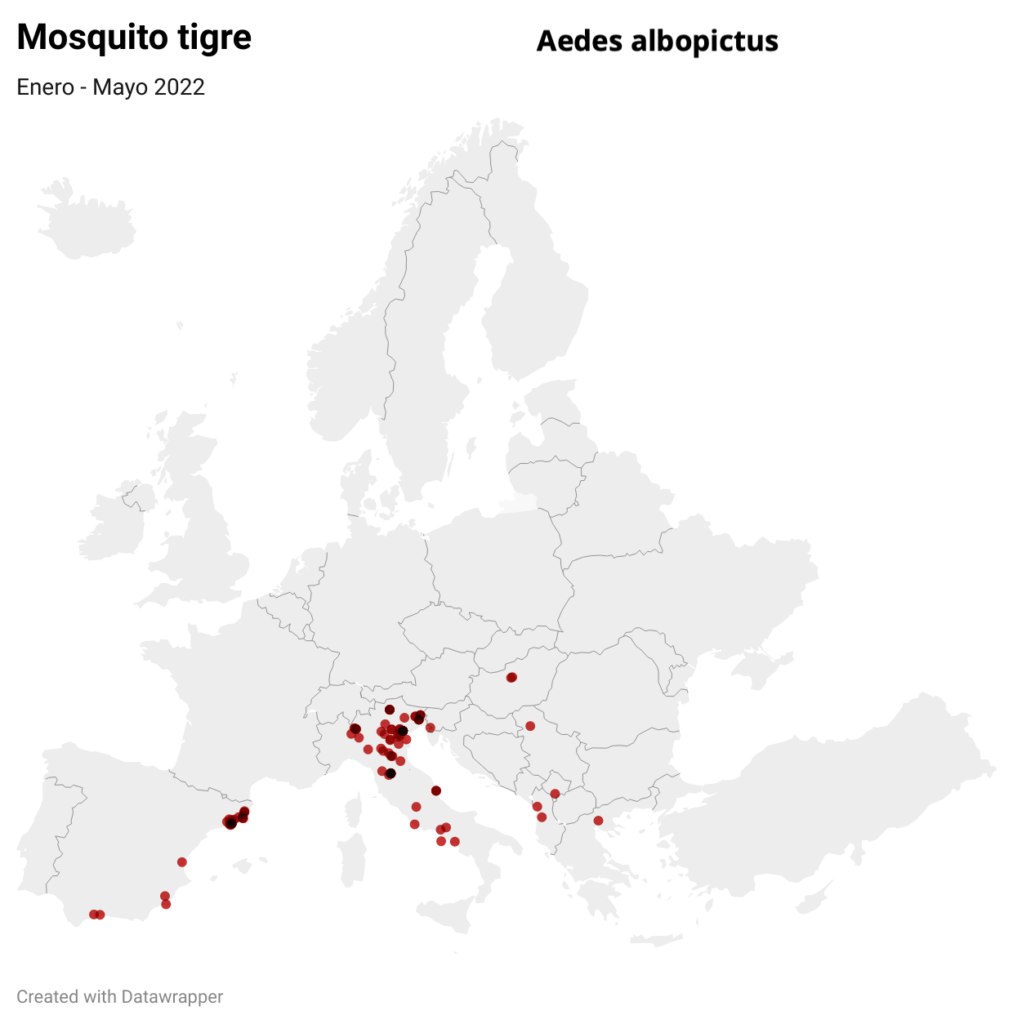
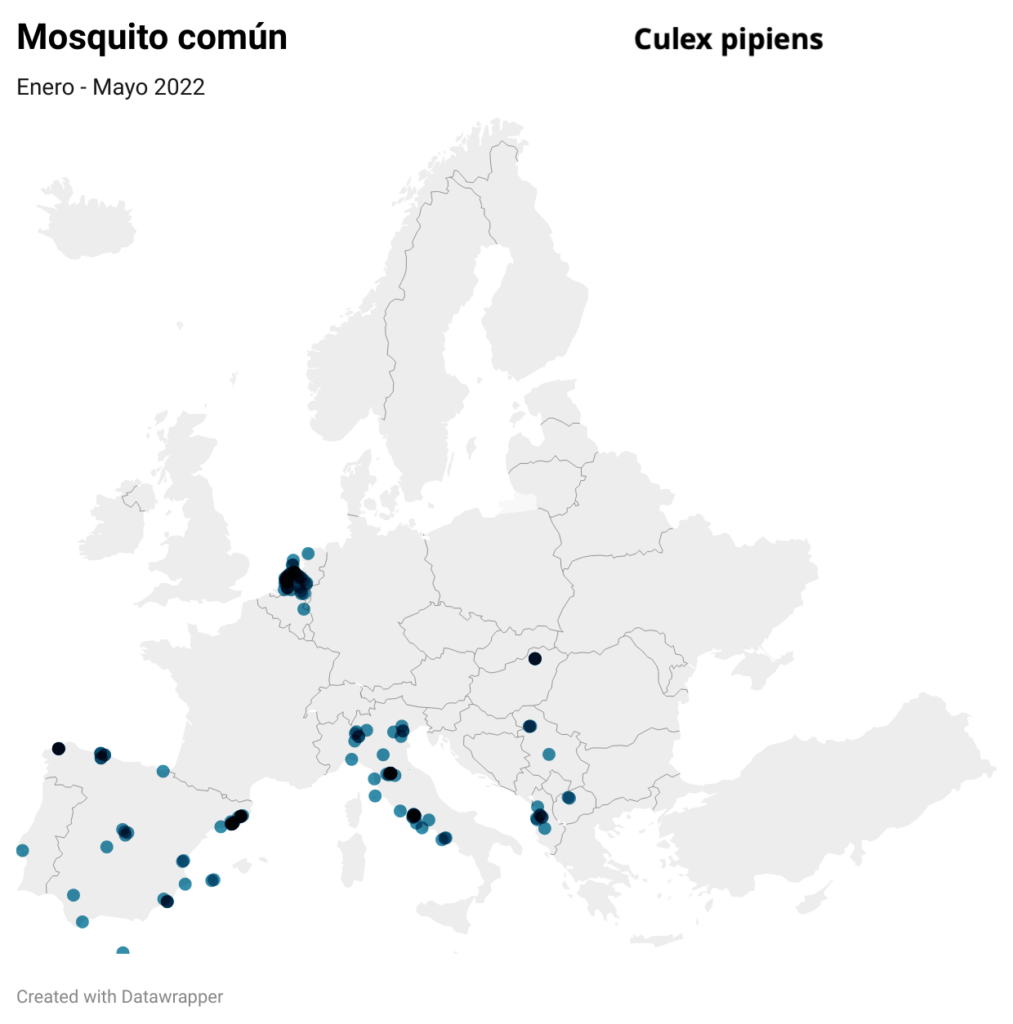
The implementation of our platform in Europe is mainly due to the participation in the AIM-COST project, which is generating a cross-border network on a European scale for the surveillance and control of invasive mosquitoes of the genus Aedes, and VEO, which brings together information to develop tools early warning of infectious diseases, including those transmitted by mosquitoes, as well as the Dutch national project One Health PACT that explores systems to anticipate outbreaks of infectious diseases in humans and animals.
WILL THERE BE A LOT OF MOSQUITOES THIS SUMMER?
It is the recurring question every year, people want to know if there will be many or few mosquitoes, just as public health managers would like to be able to predict where there will be more mosquitoes to anticipate and take action before there are many. Being able to predict when and how many mosquitoes will be in a place is at the genesis of Mosquito Alert, it has always been one of the long-term goals of the project, and we are getting closer to it every time. In winter we published the first prediction map for the municipality of Barcelona, produced as a result of the #MosquitoAlertBCN project, financed by the Barcelona City Council and the “la Caixa” Foundation executed by CREAF, UPF, IRIDEONand the Health Agency Public of Barcelona (ASPB). The map, which can be consulted here, informs in real time and on a 20-meter scale of the probability that a tiger mosquito and a person will interact that day, measuring the risk of encounter on a scale that goes from 0 to 1. Combining citizen science data from Mosquito Alert, data from smart and traditional traps, demographic and land use variables, as well as climate, the tool allows risk to be predicted seven days ahead. We are currently working within the framework of the Big Mosquito Bytes project to reproduce these models on a regional and state community scale. The details of the prediction map can be consulted at this link.
BREAK THE MOSQUITO CYCLE

Remember that mosquitoes have a complex life cycle, with an aquatic larval stage. The development of tiger mosquito larvae in high ambient temperatures can be very rapid, going from egg to larva, larva to pupa, and pupa to adult, in less than a week. The best way to break the cycle and avoid the massive presence of mosquitoes is to avoid accumulations of water on our private properties. These hot days, check pot saucers, pet feeders, and any other objects that can collect water. Don’t let standing water sit on your property for days at a time: it can become a hotbed for tiger mosquitoes.
So far the May newsletter, it only remains to remind you to always carry our app with you, you never know where you may encounter a mosquito.


Copyright © 2022 Mosquito Alert
Bron: Mosquito Alert
Date: 9 June 2022